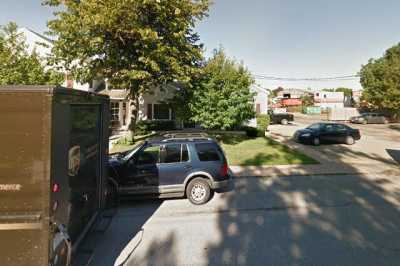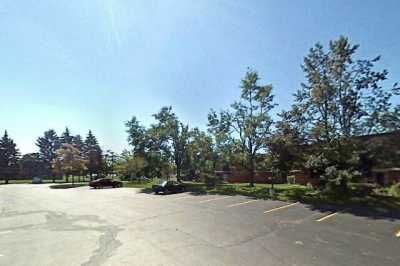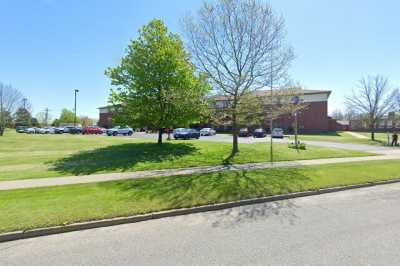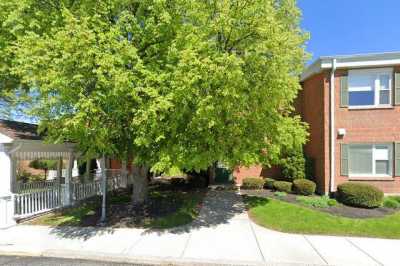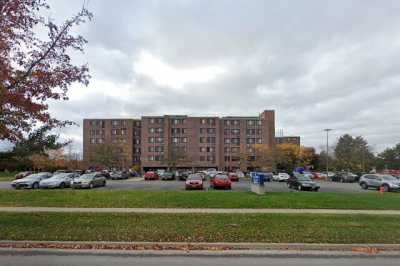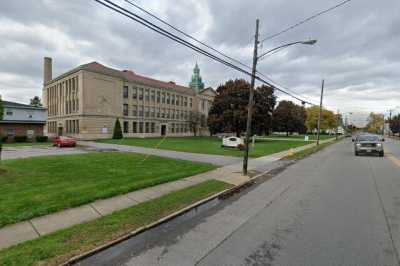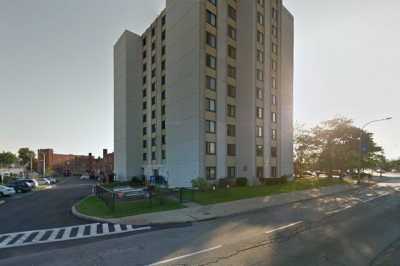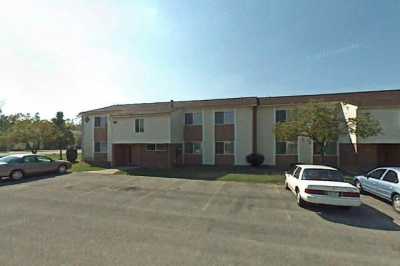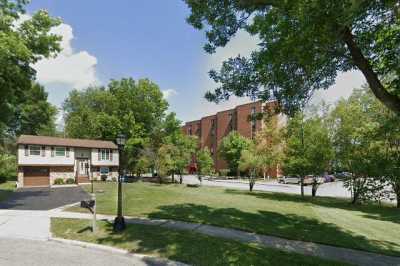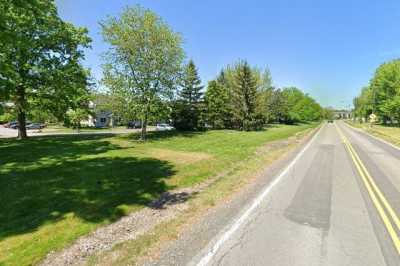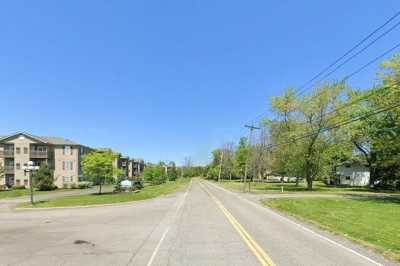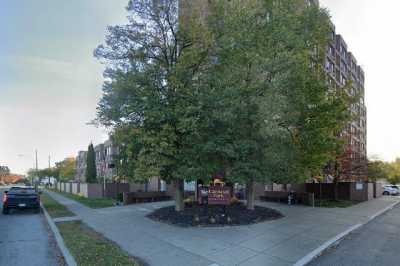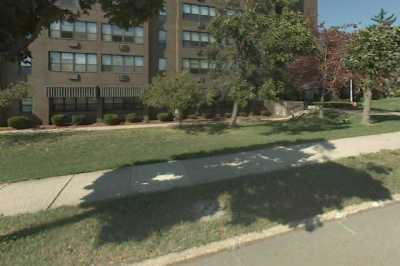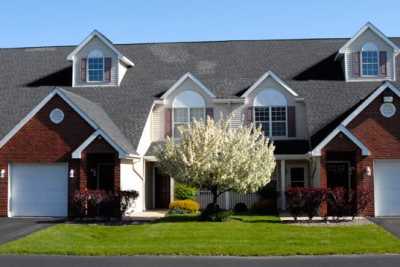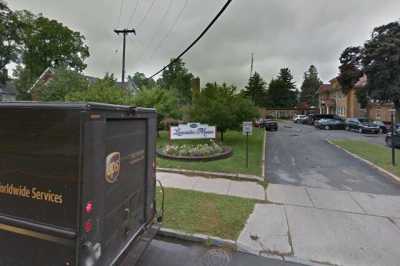
10 Best Independent Living Communities in Buffalo, NY
The Buffalo area offers a nice mix of history, culture, and recreational activities for residents of all ages. The park system alone makes it worth living here, designed by the renowned landscape architect, Frederick Law Olmsted. The city also has a thriving art scene, with galleries and museums galore. Additionally, the cost of living is 5% lower in Buffalo than the national average, making it ideal for almost anyone looking to remain active during retirement.
Speaking of retirement, the Buffalo area is home to many senior living options – independent living being chief among them. Like many communities across the country, independent living facilities in the city offer a senior-friendly living environment that will allow you to age in place, with their centralized locations, improved accessibility, onsite amenities, and socializing opportunities aplenty. Should you need assistance, there are also those independent living communities that offer additional services, such as assisted living and memory care, as part of their combination of care offerings.
With several factors to consider when looking for an independent living community, A Place for Mom has put together this guide to make the process easier. Below, you’ll find listings for the five Buffalo independent living communities in A Place for Mom’s network, ranked by a variety of categories. Further in, you can also find details on payment options, local and state regulations, transportation, health care, and more on Buffalo itself.
Buffalo Independent Living Facilities | 576 Reviews
Our free advisors can help
- Compare local facilities
- Determine care type
- Schedule tours
- Evaluate pricing
I have regularily been going there for over six years and It has never had a smell of any kind. It is very clean and the food is very good. I have had two relatives there, one of which is my mom. I...
Our methodology
How we rank order the Buffalo community options above
We developed a proprietary recommendation system that orders Buffalo community options based on factors we know are important to seniors and their families:
- Proximity to your search location
- Availability of recent, high-quality reviews
- The amount of detailed community information available
Where we source our information
14,000+ communities
We collect proprietary data from our network of 14,000+ senior living communities in the U.S., with regular refreshes of data and information
350,000+ reviews
We have 387,000+ reviews from senior living residents and family members that provide first-hand accounts about senior living communities
- Costs of independent living in the Buffalo area
- What families are saying about independent living in Buffalo
- How people pay for independent living in Buffalo
- Understand New York laws and regulations for independent living communities
- Types of independent living in Buffalo
- Buffalo independent living services and amenities
- Explore senior care with confidence
- Unfamiliar with Buffalo? Highlights for seniors
Costs of independent living in the Buffalo area
The monthly costs of an independent living community can vary greatly based on a variety of factors. Neighborhood, unit size, floor plan, amenities, and even type of community are just a few of the variables that can impact the expense involved. In Buffalo, the average cost of our partnered independent living communities averages about $3,096 per month, according to A Place for Mom’s proprietary data.[05] This figure reflects what residents of our network facilities actually paid and accounts for the price of rent, service fee add-ons, different floorplans, and any associated fees.
The following figures represent the average baseline and rent costs for the Buffalo area. These figures do not include add-on fees.
Average monthly cost of Independent Living in Buffalo, NY vs. nearby cities
Average monthly cost of Independent Living in Buffalo, NY vs. the state and national average
Average monthly cost of Independent Living in Buffalo vs. other types of senior living
Median monthly costs of Independent Living in Buffalo, NY by room type
Average cost of Independent Living in Buffalo over time
What families are saying about independent living in Buffalo
Recent reviews for independent living in Buffalo
River Road Retirement Residence in Niagara Falls, ON
Brompton Heights in Williamsville, NY
Elison of Orchard Glen in Orchard Park, NY
How people pay for independent living in Buffalo
Paying for independent living often entails utilizing a combination of resources, most of which will be private in nature. A large part of this is due to the fact that independent living is not technically a senior-care facility, meaning that residents will not receive health or medical care from trained staff as part of the services of the facility. Because of this, programs such as Medicaid, Medicare, and long-term care insurance do not cover independent living costs. However, you may be eligible for assistance from these programs if you require medically necessary in-home care services while you’re residing in an independent living community.
Below, you’ll find additional information on a variety of payment methods, including housing assistance, VA benefits, Medicare, Medicaid, and private funds.
For the most part, seniors will find themselves relying on private resources when moving to an independent living community. This may include retirement savings, Social Security benefits, pensions, distributions from retirement accounts, income generated by investments, and any one or combination of the following:
Number of veterans who live in Buffalo
About 44 percent of Buffalo veterans are over the age 65
As is the case in many cities, Buffalo veterans have a range of benefits available to them that may help offset the costs associated with moving to an independent living community – chief among them being the VA Pension. Depending on your age, income, net worth, and time of service, you may be eligible for the Pension. Veterans can use these funds toward the monthly costs of independent living.
If eligible for the VA Pension, you may also be eligible for the VA Aid and Attendance (A&A) benefit, which is made available to veterans who require assistance with day-to-day activities (i.e., bathing, grooming, feeding, etc.).
Additionally, the Buffalo area is home to WNY Heroes, Inc., a local nonprofit that has a number of grants available for veterans in need of financial assistance. For housing-related expenses, the Heroes Bridge helps veterans in paying for rent and utilities. Contact WNY Heroes, Inc. through its website or by calling 716-630-5020 for further details. The New York State Division of Veterans Affairs also offers local resources to veterans, like programs for disabled veterans.
If you find yourself wondering how to apply for benefits or which benefits you’re eligible for, rest assured that you’re not alone. The VA benefits system is complex, and it’s often beneficial to work with a veterans service officer. They can provide assistance for veterans, their dependents, and their survivors in applying for the federal and state benefits owed.
The local VA offices or a slew of Buffalo area veterans service organizations (VSOs) are where you can find a veterans service officer to help you. There are a large number of VSOs in Buffo, so while some are listed below, a complete list of Buffalo VSOs can be seen here.
Resources for Buffalo veterans
VA Buffalo Regional Office
130 S. Elmwood Ave., Suite 601
Buffalo, NY 14202
Phone: 800-827-1000
Hours: Monday through Friday, 8 a.m. – 4:30 p.m.
Erie County Veterans Service Agency
Rath Office Building
95 Franklin St., Suite 800
Buffalo, NY 14202
Phone: 716-862-8902
Disabled American Veterans
130 S. Elmwood Ave., Suite 620
Buffalo, NY 14202
Phone: 716-858-6363
Hours: Monday through Friday, 9 a.m. – 3 p.m.
Erie County American Legion
609 City Hall
65 Niagara St.
Buffalo, NY 14202
Phone: 716-852-6500
AMVETS Post 72
1881 Clinton St.
Buffalo, NY 14206
Phone: 716-825-6207
Vietnam Veterans of America Post 77
57 Main St.
Tonawanda, NY 14150
Phone: 716-693-4479
VFW Post 898
Col. John B. Weber Post
2909 S. Park Ave.
Buffalo, NY 14218
Phone: 716-823-9605
New York’s Medicaid program does not cover the rent and other costs associated with living in an independent living community, but Medicaid can cover required medically necessary in-home health care while in an independent living setting through Home and Community-Based Services (HCBS) Waivers for those who qualify.
Though the Medicaid enrollment process entails only a few steps, it can get a little confusing. You can start by applying online. Here is a step-by-step instruction page for applying for Medicaid online. If you’d fill out a paper application for Medicaid, you can do so and then mail it to the Erie County Work Center. If you need some help or have questions, there are New York State of Health navigators available to assist. You can look at this navigator directory to find a monthly schedule of where you can meet with a navigator or find information about how to call them or chat online.
The Long-Term Care Ombudsman Program is also a good source of information. The Ombudsman can answer questions about Medicaid or Medicare.
Buffalo resident Medicaid resources
Medicaid application mailing address
P.O. Box 120
Buffalo, NY 14201-9903
Erie County Work Center
159 Pearl St.
Buffalo, NY 14202
Hours: Monday through Friday, 9 a.m. – 4 p.m.
New York State of Health Customer Service Center
Phone: 855-355-5777
TYY: 800-662-1220
Hours: Monday through Friday, 8 a.m. – 8 p.m.; Saturday, 9 a.m. – 1 p.m.
Local Long-Term Care Ombudsman Program – Region 15
Contact: Susan Fenster, ombudsman coordinator
2447 Main St.
Buffalo, NY 14214
Phone: 716-817-5626
Email: sfenster@people-inc.org
Medicare is a federal health insurance program for people who are 65 and older to cover health-related care services, like inpatient hospital care, skilled nursing, lab tests, surgery, home health care, medical equipment, and some preventative care. Medicare cannot be used to help offset the monthly costs of an independent living community.
However, it’s still an important benefit for eligible seniors that can provide some cost savings on health care. Seniors in the Buffalo area may want to look into the following Medicare programs and resources for assistance:
- Medicare Savings Program
The Medicare Savings Program (MSP) helps people on a limited income pay for Medicare premiums, fees, and deductibles. It can also help cover a range of cost-sharing expenses. Upon enrollment, seniors will automatically receive Extra Help, which pays most of the prescription drug plan (Medicare Part D). - EPIC for New York
The Elderly Pharmaceutical Insurance Coverage (EPIC) program helps income-eligible seniors with the costs associated with Medicare Part D, including premium payments and medication costs after meeting the Part D deductible. - Catholic Health LIFE
Catholic Health LIFE is a Program of All-inclusive Care for the Elderly (PACE) for seniors who still live in the community yet require a nursing home level of care. Services include but are not limited to doctor and nursing care, rehabilitation therapies, meals, activities, and transportation. - Fallon Health Weinberg-PACE
Fallon Health Weinberg-PACE is another local Program of All-inclusive Care for the Elderly. Seniors who still live on their own but require some level of nursing-home care may be eligible to receive comprehensive medical care and support through this program. - Health Insurance Information, Counseling, and Assistance Programs
The Health Insurance Information, Counseling, and Assistance Programs (HIICAP) is New York State’s state health insurance assistance program (SHIP), which provides assistance to seniors who need help navigating Medicare.
You can sign up for Medicare at the local Social Security Administration office. If you need help understanding Medicare requirements or with filling out the application, look for a New York State of Health (NYSOH) navigator in your area. You can also reach out to the local ombudsman program for assistance.
Buffalo resident Medicare resources
Social Security Administration Office
478 Main St., Suite 200
Buffalo, NY 14202
Phone: 800-772-1213
Hours: Monday through Friday, 9 a.m. – 4 p.m.
EPIC Application and Contact Information
Phone: 800-332-3742
TYY: 800-290-9138
Email: nysdohepic@magellanhealth.com
Catholic Health LIFE PACE Program
55 Melroy Ave.
Buffalo, NY 14211
Phone: 716-819-5433
Monday through Friday, 8:30 a.m. – 4:30 p.m.
Fallon Health Weinberg PACE
461 John James Audubon Parkway
Amherst, NY 14228
Phone: 855-665-1112
Hours: Monday through Friday, 8:30 a.m. – 5 p.m.
Local Long-Term Care Ombudsman Program – Region 15
Contact: Susan Fenster, ombudsman coordinator
2447 Main St.
Buffalo, NY 14214
Phone: 716-817-5626
Email: sfenster@people-inc.org
Health Insurance Information, Counseling, and Assistance Program
Phone: 800-701-0501
NYSOH Navigator Program – Erie County
237 Main St., Suite 400
Buffalo, NY 14203
Phone: 716-847-0650
Hours: Monday through Friday, 9 a.m. – 4 p.m.
Understand New York laws and regulations for independent living communities
Independent living communities are not care facilities since they do not provide residents with health or personal care, so they do not need a license from the New York State Department of Health (NYSDOH) to take in residents.
Combination independent and assisted living facilities
There is a caveat, however. An independent living community may need to be licensed by HYSDOH as an Adult Care Facility (ACF) if it provides, arranges for, or coordinates any one of the following:
- Health-related services
- Medication management
- 24-hour supervision or oversight
- Assistance with personal care
- Assistance with finances
- Case management or service coordination beyond information and referral
- Creation, implementation, or oversight of a resident’s service plan
Some of our partner independent living communities in the Buffalo area do offer more than independent living. They provide care services like assisted living and memory care in combination with independent living. These combination facilities are required to have an Assisted Living Residence (ALR) license, for all offering assisted living care, and an additional Special Needs Assisted Living Residence (SNALR) certification, if offering memory care, to operate and be subject to certain requirements based on the type of care being offered.
Standalone independent living
Standalone independent living communities are subject to federal, state, and local housing laws. This includes remaining compliant with the Fair Housing Act and the Americans with Disabilities Act (ADA).
To learn more about tenant’s rights, the guides below provide information about housing laws and guides to tenant rights:
- New York Residential Tenant’s Rights Guide
- Warrant of Habitability
- Know Your Rights: Fair Housing Laws
Inspections
With standalone independent living communities being similar to any other rental community, the Department of Permits and Inspections conducts regular inspections of the property. These inspections include maintenance of indoor and outdoor spaces for minimum housing standards, lead paint presence, and more.
The City of Buffalo’s Permit and Inspections Data Resources website lists access to public data around violations and more. The city’s open data guide gives a rundown on how to use the site. If you need assistance, reach out to the office for help.
For independent living facilities combined with licensed assisted living or memory care facilities, view inspection reports on the New York State Department of Health website. Type in the community’s name, run a search, and then click the inspection tab for report details.
New York Department of Health contact information
New York State Department of Health
Corning Tower, Empire State Plaza
Albany, NY 12237
Phone: 866-881-2809
Email: dohweb@health.ny.gov
Hours: Monday through Friday, 8:30 a.m. – 4:45 p.m.
COVID-19 regulations for Buffalo independent living communities
In the Buffalo area, no specific COVID-19 mandates are currently in effect for independent living communities. Even so, the Erie County Department of Health strongly encourages property owners and residents to follow CDC guidelines and safety measures, such as wearing masks in public, staying current with vaccinations, getting tested upon presenting symptoms, isolating, and conducting passive screening — among a host of other measures.
Also, it’s important to note that an independent living community may have its own guidelines and safety measures to prevent the spread of COVID-19.

Vaccinations.
Communities are not required to enforce vaccinations but may strongly encourage vaccinations for staff.

Masking.
People may choose to mask at any time.

Facility cleanliness.
Regular cleaning and disinfecting of surfaces is encouraged
Types of independent living in Buffalo
Independent living communities in the greater Buffalo area offer a range of residential options for seniors looking to live on their own in an age-friendly environment with various amenities and convenient services – not to mention, some much-needed communal support. As with any change to your living situation, there are several factors to consider when deciding which of our partner communities to choose.
A mix of care and support offerings
If care and support services are a factor in your decision, some independent living communities do provide such options as part of a combination of care services, but standalone independent living facilities do not provide care services. Of our Buffalo partner independent living facilities, two are standalone communities and one offers senior apartments, too. However, we have another partner that offers assisted living alongside independent living, as well as another that adds memory care. Should, for example, you and a spouse require different levels of care, then you’re assured that the two of you can remain both safe and secure in the same community if you choose one with a combination of care services.
An array of amenities for a variety of interests
One of the benefits of moving to an independent living community is its amenities, especially these days. Many senior communities try to create an all-inclusive experience for residents, some going so far as to even design the property with an onsite barber shop and/or beauty salon. You’ll also find those with a fitness center, game room, billiards lounge, movie room, and arts and crafts center. If you enjoy gardening, there are those that make available raised garden beds for residents. Plus, about 80% of our partner communities in the Buffalo area are dog- and cat-friendly, so there’s no need to worry about your four-legged family members.[05]
Buffalo independent living services and amenities
Availability of select dietary accommodations in Buffalo independent living
Availability of select dining options in Buffalo independent living
Availability of select programs and activities in Buffalo independent living
Explore senior care with confidence
Know where to start.
Identify the right care for your loved one with our free assessment.

See what you can afford.
Understand cost and payment for long-term care based on your loved one's needs.

Find top facilities for you.
Free, personalized guidance from our Senior Living Advisors can help you narrow your search.

Tour your favorite facilities.
Our free touring checklist can help you choose the right community.
Unfamiliar with Buffalo? Highlights for seniors
Number of seniors over the age of 65 currently living in Buffalo
Median annual income for Buffalo seniors 65 and older
Health care for seniors in Buffalo
The health care options for seniors living in the Buffalo area shouldn’t be much of a concern as the city is home to many excellent medical facilities.

Buffalo General Medical Center
Rated high performing in 13 conditions and procedures, U.S. News & World Report has also awarded this hospital with the status of No. 1 in the area.

Mercy Hospital-Buffalo
Mercy Hospital is rated high performing in four areas by U.S. News & World Report, including in COPD and diabetes care.

Erie County Medical Center
Erie County Medical Center is a general medical and surgical center rated high performing in hip replacement by U.S. News & World Report.

Sisters Of Charity Hospital
Sisters of Charity Hospital has been ranked high performing in the areas of COPD, kidney failure, and maternity care by U.S. News & World Report – though the facility does offer a number of other care services.

Buffalo VA Medical Center
The Buffalo VA Medical Center is the primary medical center for area veterans, providing medical, surgical, and outpatient care. Primary specialties include cardiac surgery, cardiology care, and comprehensive cancer care.
Transportation for seniors in Buffalo
For the most part, people living in Buffalo rely on their cars to get around. A large part of this has to do with convenience, of course. The other part has to do with the somewhat limited public transportation options available through the Niagara Frontier Transportation Authority (NFTA).
NFTA offers the Metro Rail, which is one line that runs along Main Street from the KeyBank Center to the South Campus of the University at Buffalo. The larger option is the bus system. Metro buses cover both Erie and Niagara counties with more than 300 buses in operation. Both the rail and the buses are wheelchair accessible.
Seniors, however, can take advantage of the transportation services available through their independent living communities. More than half of our partner facilities offer complimentary transportation while the rest provide it at cost.[07]
They can also use the Going Places Transportation System, a senior-specific, curb-to-curb van service. Just make sure to schedule the service ahead of time – two weeks for health-related trips and one week for non-medical trips. The Metro also offers a paratransit service called PAL Direct.
Additionally, seniors looking to walk to places can certainly do so. The city’s walk score is 67 on a scale to 100, according to Walk Score, which rates cities on the ease of getting around compared to other cities across the nation. A score of 67 means Buffalo is walkable, but there will be some locations or errands that would require a car or other transportation. The neighborhoods of Allen, Grant Ferry, the Central Business District, Bryant, and Front Park are much more pedestrian, with walkability scores of anywhere between 85 and 94. You may even live in a community where you can walk to some restaurants, bars, or coffee shops in no more than five minutes, which is the average for Buffalo residents.[07]

Walk Score

Transit Score

Bike Score
Senior activities in Buffalo
Buffalo has long been known for its rich history and culture. For one, the city is home to Frank Lloyd Wright’s Martin House, considered one of the architect’s most important projects during his Prairie School era. The house is an integrated composition of connecting buildings, which includes the Martin House itself, as well as a conservatory, carriage house-stable, and smaller residence. On the outskirts of Buffalo, you can also find another of Wright’s homes built for the Martin family, Graycliff, which served as their summer residence.
If architecture isn’t of much interest, then there’s the Theodore Roosevelt Inaugural Historic Site, which allows visitors to tour historically restored rooms, learn more about the event, and experience a number of interactive exhibits. Being on the Eastern shoreline, the city also is home to the Buffalo and Erie County Naval and Military Park, where visitors have a variety of tour options that include a museum, the grounds, and four decommissioned Naval vessels.
Seniors looking to enjoy the outdoors couldn’t have picked a better city than Buffalo. The city’s entire park system was designed by Frederick Law Olmsted, a renowned landscape architect.[01] Delaware Park, one of his creations, is considered one of the top 10 parks in the world, with plenty of walking paths, a carriage drive, a picturesque lake, and myriad other features – including an audio tour.[01] There’s also always Niagara Falls State Park, with its hiking trails, gorgeous views, interactive exhibits, and other attractions.
Head over to the college campus and take in a football or basketball game (or many other sports) and cheer on the University of Buffalo Bulls. If you’d rather get involved in more senior-related activity, there are many senior center options available in Buffalo that offer an array of activities, including exercise classes, music, arts and crafts, computer classes, and pickleball, of course. The South Buffalo Community Association is just one of Buffalo centers that provides many activities for seniors, including arts and physical activities available as well as nutrition programs. The Erie County Department of Senior Services also schedules regular events and activities for the senior population. You may find yourself taking part in gardening, doing some crafts, or visiting a local attraction, like the Buffalo and Erie County Botanical Gardens or Shea’s Performing Arts Center.
You can always roll the dice at the Seneca Buffalo Creek Casino, which offers table games, slot machines, a sports lounge, and dining. You could also head over to the Seneca Niagara Resort and Casino for concerts, comedy, and other live entertainment.
Frequently Asked Questions
Solstice Senior Living at East Amherst, Brookdale Kenmore and Peregrine Senior Living at Cheektowaga are the top-rated Independent Living facilities near Buffalo, NY. These Independent Living facilities received the highest rankings based on verified family reviews. See full list of communities.
The average cost of Independent Living in Buffalo is $2,894 per month. This cost may vary based on location, amenities, floorplan, level of care and other factors.
Test answer:
The average cost of Independent Living in Buffalo is $2,894 per month. This cost may vary based on location, amenities, floorplan, level of care and other factors.
References
Buffalo Olmsted Parks Conservancy. (2018). Buffalo’s Frederick Law Olmsted Legacy: The Park System that Started It All.
Payscale.com (2023). Cost of Living in Buffalo, New York.
United States Census Bureau. (2021). Veteran Status (S2101) [Data Set]. American Community Survey.
United States Census Bureau. (2021). Age and Sex (S0101) [Data Set]. American Community Survey.
A Place for Mom. (2023). A Place for Mom proprietary data.
U.S. News & World Report. (2023). Best Hospitals in Buffalo, NY.
Walk Score. (2023). Living in Buffalo.

More questions?
Ask an A Place for Mom local advisor at no cost.
- Williamsville, New York
- Clarence, New York
- Amherst, New York
- Niagara Falls, New York
- West Seneca, New York
- East Aurora, New York
- Tonawanda, New York
- Lancaster, New York
- Orchard Park, New York
- North Tonawanda, New York
- Lockport, New York
- Depew, New York
- Lewiston, New York
- Hamburg, New York
- Pendleton, New York
- Wheatfield, New York
- Harris Hill, New York
- Alden, New York
- Sanborn, New York
- Eden, New York

